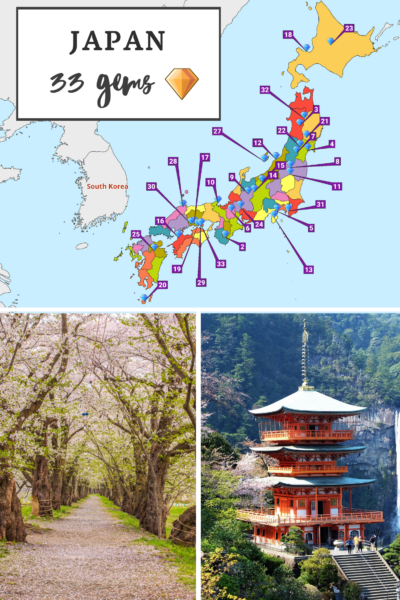Join us on an adventure to some of Japan’s hidden spots this summer with the help of the Mappr Team. We’ve put together a list of 33 amazing places, each with its own special story and beauty. We’re going to explore places not many tourists know about, where history and nature come together in awesome ways.
We’re going to visit peaceful islands, old paths, and secret hot springs that are just waiting for us to find them. Our list will take us on a journey to see Japan in a whole new way, from the warm beaches of Okinawa to the cool, historical streets of Takayama up in the mountains.
Come with us to discover the quiet but incredible parts of Japan’s big, beautiful world.
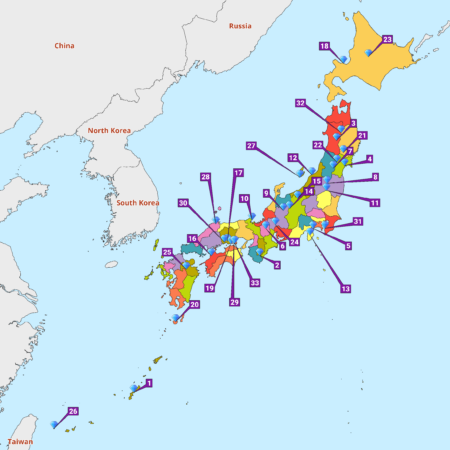
| No. | Place | Province | Closest International Airport |
|---|---|---|---|
| 1 | Okinawa | Okinawa Prefecture | Naha Airport (OKA) |
| 2 | Kumano Kodo | Wakayama Prefecture | Kansai International Airport (KIX) |
| 3 | Kakunodate | Akita Prefecture | Akita Airport (AXT) |
| 4 | Matsushima, Miyagi | Miyagi Prefecture | Sendai Airport (SDJ) |
| 5 | Hakone | Kanagawa Prefecture | Tokyo International Airport (HND) |
| 6 | Lake Biwa | Shiga Prefecture | Kansai International Airport (KIX) |
| 7 | Yamagata | Yamagata Prefecture | Yamagata Airport (GAJ) |
| 8 | Aizuwakamatsu, Fukushima | Fukushima Prefecture | Fukushima Airport (FKS) |
| 9 | Takayama | Gifu Prefecture | Chubu Centrair International Airport (NGO) |
| 10 | Ine Funaya | Kyoto Prefecture | Kansai International Airport (KIX) |
| 11 | Ouchijuku, Fukushima | Fukushima Prefecture | Fukushima Airport (FKS) |
| 12 | Niigata | Niigata Prefecture | Niigata Airport (KIJ) |
| 13 | Izu Peninsula | Shizuoka Prefecture | Tokyo International Airport (HND) |
| 14 | Kamikochi, Nagano | Nagano Prefecture | Matsumoto Airport (MMJ) |
| 15 | Togakushi, Nagano | Nagano Prefecture | Matsumoto Airport (MMJ) |
| 16 | Matsuyama, Ehime | Ehime Prefecture | Matsuyama Airport (MYJ) |
| 17 | Kurashiki, Okayama | Okayama Prefecture | Okayama Airport (OKJ) |
| 18 | Otaru, Hokkaido | Hokkaido Prefecture | New Chitose Airport (CTS) |
| 19 | Naoshima Island | Kagawa Prefecture | Takamatsu Airport (TAK) |
| 20 | Yakushima Island | Kagoshima Prefecture | Yakushima Airport (KUM) |
| 21 | Geibikei Gorge, Iwate | Iwate Prefecture | Iwate-Hanamaki Airport (HNA) |
| 22 | Zao Fox Village | Miyagi Prefecture | Sendai Airport (SDJ) |
| 23 | Shirogane Blue Pond | Hokkaido Prefecture | Asahikawa Airport (AKJ) |
| 24 | Monet Pond | Gifu Prefecture | Chubu Centrair International Airport (NGO) |
| 25 | Kurokawa Onsen | Kumamoto Prefecture | Kumamoto Airport (KMJ) |
| 26 | Yonaguni Island | Okinawa Prefecture | Yonaguni Airport (OGN) |
| 27 | Sado Island | Niigata Prefecture | Niigata Airport (KIJ) |
| 28 | Shimane | Shimane Prefecture | Izumo Airport (IZO) |
| 29 | Shodoshima Island | Kagawa Prefecture | Takamatsu Airport (TAK) |
| 30 | Yakage Town, Okayama | Okayama Prefecture | Okayama Airport (OKJ) |
| 31 | Nokogiriyama, Chiba | Chiba Prefecture | Narita International Airport (NRT) |
| 32 | Hachimantai | Iwate Prefecture | Iwate-Hanamaki Airport (HNA) |
| 33 | Teshima Island | Kagawa Prefecture | Takamatsu Airport (TAK) |
1. Okinawa
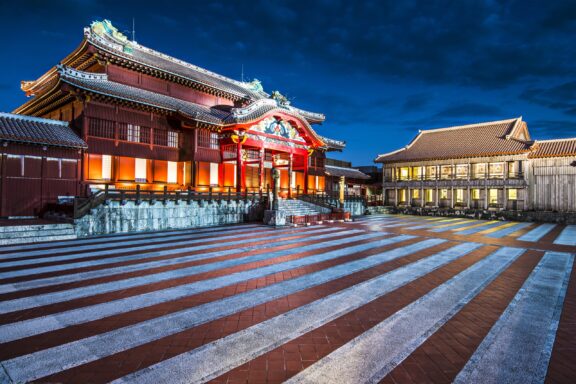
Okinawa, the southernmost prefecture of Japan, is a tropical paradise known for its rich Ryukyu culture, vibrant coral reefs, and poignant historical sites.
The islands offer a unique blend of Japanese and indigenous cultures, evident in their distinct architecture, music, and cuisine. Okinawa’s main island is home to the historic Shuri Castle, a UNESCO World Heritage site, and the Peace Memorial Park commemorates the Battle of Okinawa.
Beyond its cultural significance, Okinawa boasts stunning natural landscapes, from the pristine beaches of Miyako and Ishigaki islands to the lush forests of Iriomote Island, making it a premier destination for beach-goers, divers, and nature enthusiasts.
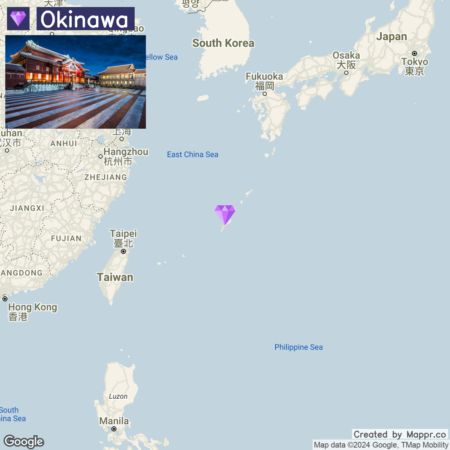
- ✈️ How to Get There: Okinawa is easily accessible by air. Naha Airport is the main gateway to the islands, offering flights from major cities in Japan and select international destinations.
- 🏨 Where to Stay: The Ritz-Carlton Okinawa, situated amidst the lush landscapes of Nago, offers a luxurious retreat with exquisite rooms. For those seeking a beachfront experience, the Halekulani Okinawa in Onna Village presents elegant accommodations with stunning sea views.
2. Kumano Kodo
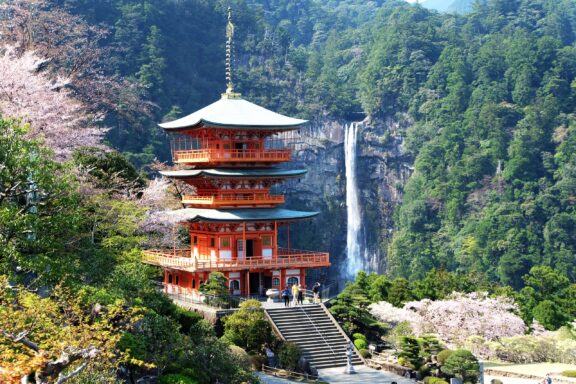
Tucked away in the verdant landscapes of the Kii Peninsula, the Kumano Kodo pilgrimage routes stand as a testament to Japan’s rich spiritual heritage.
This network of ancient trails, weaving through misty forests and rugged mountains, offers a journey back in time, inviting travelers to tread the same paths once walked by emperors and pilgrims alike.
The Kumano Kodo is not merely a hike; it’s a spiritual voyage that harmonizes the soul with nature, punctuated by the majestic Kumano Sanzan shrines at its culmination.
Along the way, the whispering streams, cascading waterfalls, and the overarching tranquility of the wilderness serve as constant companions.
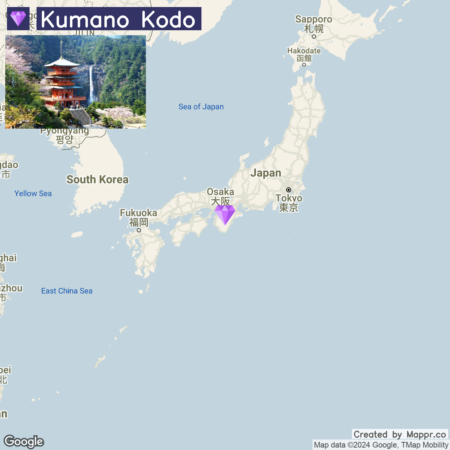
- ✈️ How to Get There: Embarking on the Kumano Kodo pilgrimage begins with a journey to Tanabe City via the JR West Railways from significant hubs like Osaka or Kyoto. From Tanabe, access to the trails can be facilitated by local buses, offering a gateway to this ancient spiritual realm.
- 🏨 Where to Stay: Nestled within the heart of this mystical landscape, the Kumano Kodo Nagano Guesthouse provides a serene retreat. It’s a place where the warmth of traditional hospitality merges with the tranquil beauty of the surrounding nature.
3. Kakunodate
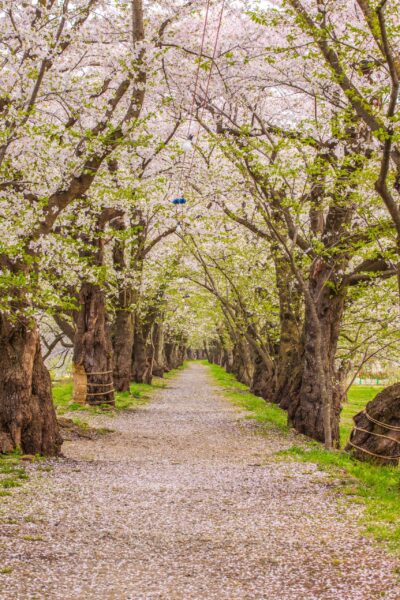
Kakunodate, known as the “Little Kyoto of Tohoku,” is a charming samurai district in Akita Prefecture, where time seems to stand still. This historic town is famed for its well-preserved samurai houses and gardens, offering a glimpse into Japan’s feudal past.
The weeping cherry trees lining the streets create a breathtaking spectacle in spring, making Kakunodate one of the best places in Japan to experience cherry blossom season. The town’s cultural heritage and serene atmosphere make it a must-visit for history buffs and nature lovers.
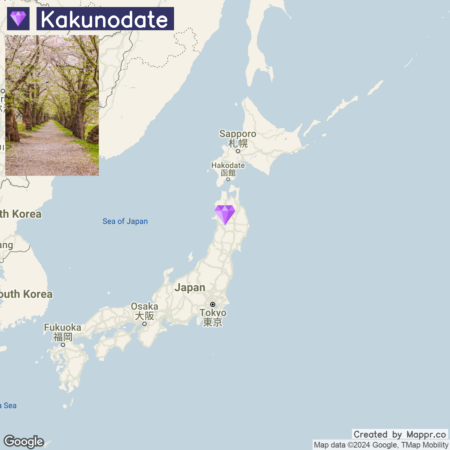
- ✈️ How to Get There: Kakunodate is accessible by train from Tokyo via the Akita Shinkansen, providing a direct and scenic route to this historical gem.
- 🏨 Where to Stay: The Aoni Sanso presents an immersive retreat into Japan’s serene natural beauty, nestled in the tranquil surroundings of Aomori Prefecture, and invites guests to experience the essence of traditional Japanese hospitality.
4. Matsushima, Miyagi
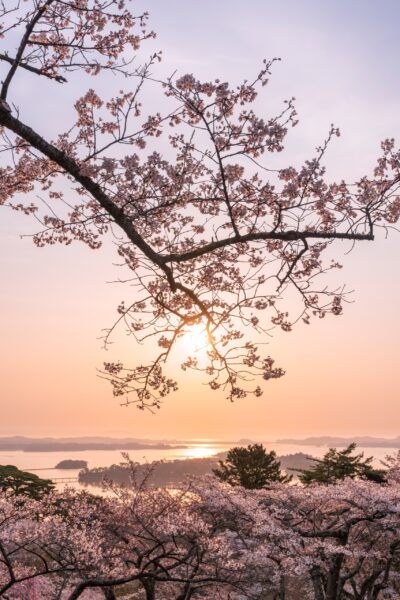
Matsushima, celebrated as one of Japan’s three most scenic views, is a breathtaking bay with over 260 pine-clad islets. Located in Miyagi Prefecture, this natural masterpiece has inspired poets and artists with its ethereal beauty for centuries.
Matsushima offers a variety of experiences, from cruising around the bay to exploring ancient temples like Zuigan-ji, one of the Tohoku region’s most important Zen temples.
The scenic beauty and rich cultural heritage make Matsushima a captivating destination for those seeking tranquility and inspiration.
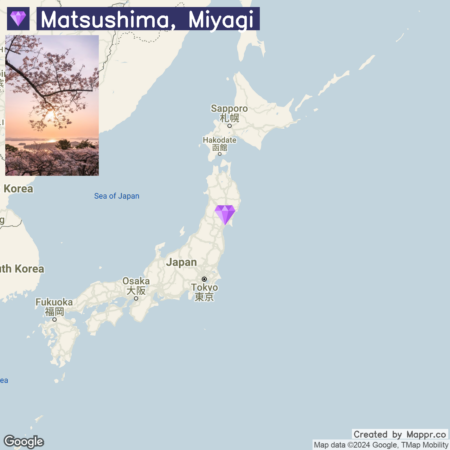
- ✈️ How to Get There: Matsushima is easily reached by train from Sendai, the largest city in the Tohoku region, making it a convenient day trip or a peaceful retreat from urban life.
- 🏨 Where to Stay: The Hotel Matsushima Taikanso offers guests traditional accommodations with stunning bay views. The Matsushima Ichinobo combines contemporary luxury with traditional Japanese hospitality for a modern twist.
5. Hakone
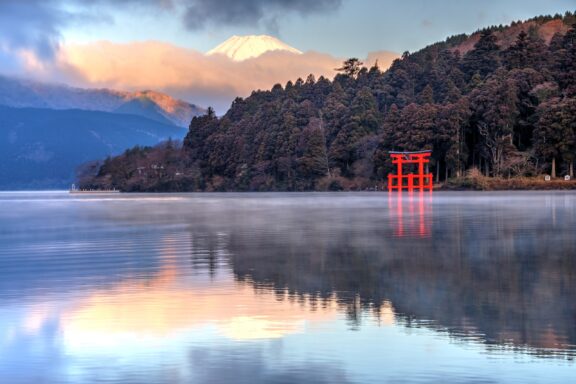
Nestled in the heart of Kanagawa Prefecture, Hakone is a scenic haven that offers a tranquil escape from the hustle and bustle of city life.
Renowned for its hot springs, stunning views of Mount Fuji, and the serene Ashi Lake, Hakone encapsulates the essence of natural beauty and relaxation.
This region is a tapestry of lush mountains, steaming geothermal springs, and rich cultural landmarks like the Hakone Shrine and the open-air museum. Hakone invites visitors to immerse in a landscape where every corner promises discovery.
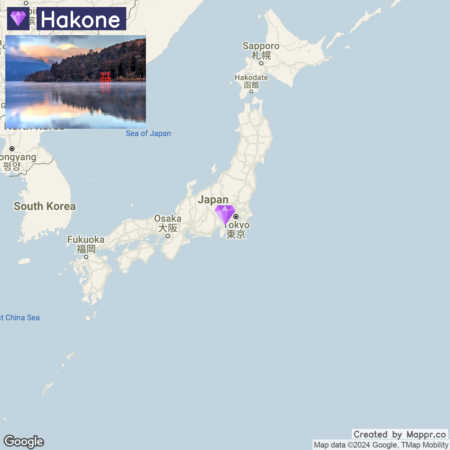
- ✈️ How to Get There: Hakone is most conveniently accessed from Tokyo by the Odakyu Electric Railway, offering a direct, picturesque journey to this tranquil destination.
- 🏨 Where to Stay: For those seeking the quintessential Hakone experience, the Hakone Ashinoko Hanaori offers lakeside serenity with its open-air baths and views of Mount Fuji. Alternatively, the Gora Kadan, nestled amidst Hakone’s mountains, presents a luxurious retreat, blending traditional ryokan hospitality.
6. Lake Biwa
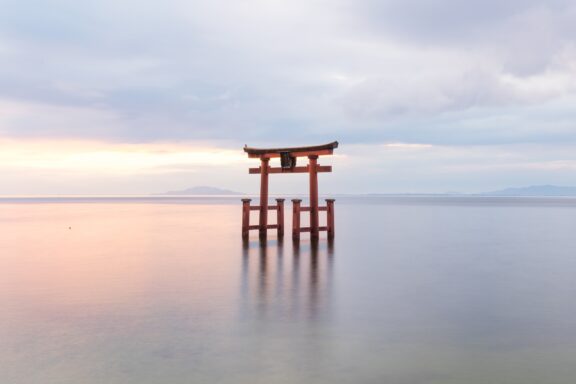
Lake Biwa, the largest freshwater lake in Japan, located in Shiga Prefecture, is a natural wonder that has captivated hearts for centuries. With its crystal-clear waters, this ancient lake is a vital lifeline for the surrounding ecosystems and a hub for cultural and recreational activities.
Surrounded by quaint towns, historic temples, and lush landscapes, Lake Biwa offers many experiences, from leisurely boat cruises to exploring its waters’ vibrant flora and fauna.
The lake’s shores are dotted with beaches, resorts, and scenic spots like the iconic Biwa Bridge, making it a perfect destination for adventure seekers and those pursuing tranquility.
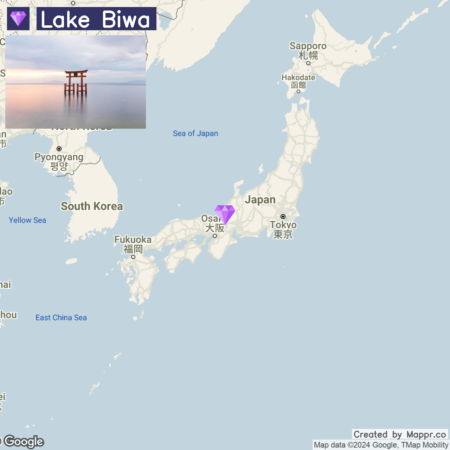
- ✈️ How to Get There: Easily accessible from Kyoto, Lake Biwa is just a short train ride via the JR Biwako Line, inviting travelers to enter a world where nature and history intertwine seamlessly.
- 🏨 Where to Stay: The Lake Biwa Otsu Prince Hotel, towering gracefully by the lake’s edge, offers breathtaking views and a luxurious stay. For a more intimate experience, the Biwako Ryokusuitei offers traditional Japanese hospitality with its tatami rooms and onsen facilities.
7. Yamagata
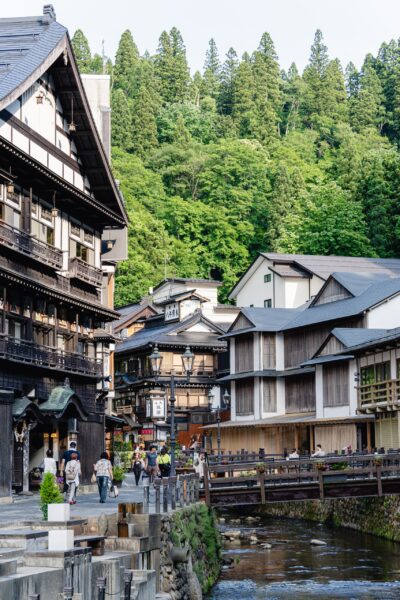
Yamagata City, nestled in the vast plains of Yamagata Prefecture, serves as a gateway to the region’s natural wonders, including the famous Zao Onsen ski and hot spring resort.
Known for its fruit orchards and the scenic beauty of the surrounding mountains, Yamagata offers a blend of cultural heritage and outdoor adventures.
Its temples, parks, and the annual Yamagata Hanagasa Festival, celebrated with vibrant parades and traditional dance, reflect the city’s history.
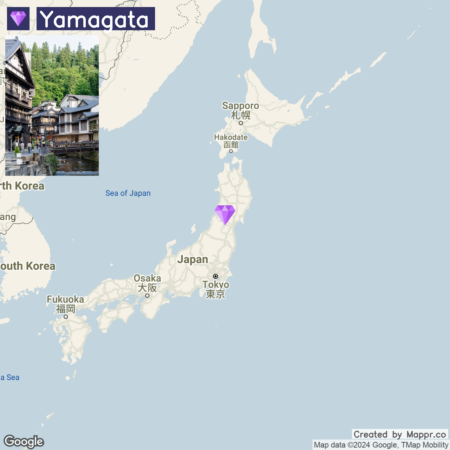
- ✈️ How to Get There: Yamagata is accessible by the Yamagata Shinkansen from Tokyo, offering a smooth and scenic journey to the heart of Tohoku.
- 🏨 Where to Stay: The Daiwa Roynet Hotel Yamagata Ekimae provides a traditional Japanese onsen experience; alternatively, the Richmond Hotel Yamagata Ekimae offers modern comfort and convenience and is ideally located for exploring the city and its surroundings.
8. Aizuwakamatsu, Fukushima
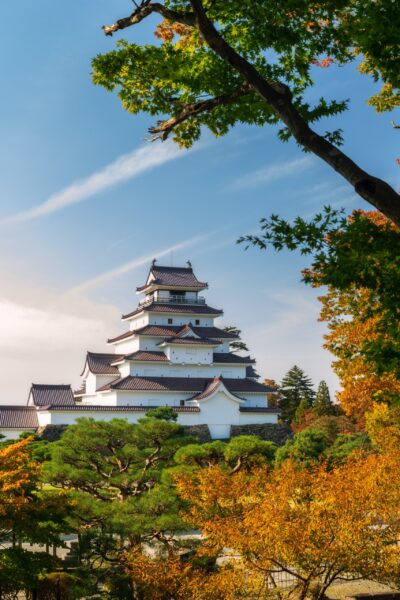
Aizuwakamatsu, in the heart of Fukushima Prefecture, is a city steeped in samurai history and tradition. Known for the iconic Tsuruga Castle and its role in the Boshin War, this city offers a deep dive into Japan’s feudal past.
The Sazaedo Pagoda and the Aizu Samurai Residences are just a few cultural treasures awaiting visitors. Aizuwakamatsu is also the gateway to the beautiful landscapes of the Aizu region, known for its sake breweries and scenic beauty.
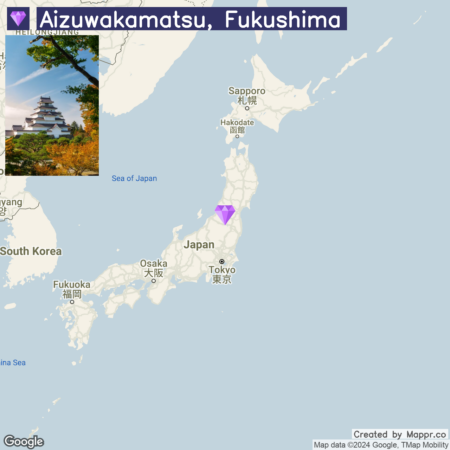
- ✈️ How to Get There: Aizuwakamatsu is reachable by train from Tokyo, with a transfer at Koriyama Station, providing an insightful journey into Japan’s rich history and culture.
- 🏨 Where to Stay: The Shosuke-no-Yado Takinoyu offers a historic ryokan experience, immersing guests in traditional Japanese hospitality and hot springs. For those seeking a contemporary stay, the Aizu Tsuruya Hotel provides modern amenities with easy access to the city’s historical sites.
9. Takayama
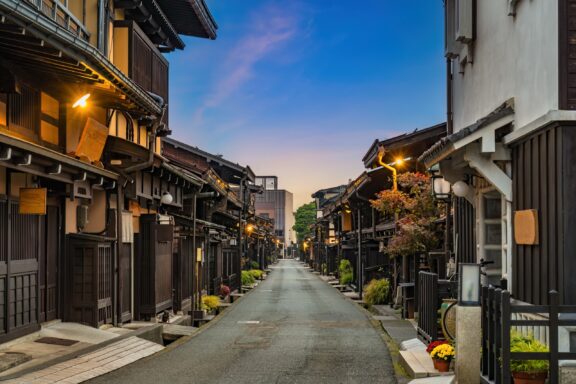
Takayama, nestled in the mountainous Hida region of Gifu Prefecture, is a city that time seems to have forgotten.
With its beautifully preserved old town, Takayama offers a glimpse into Japan’s Edo period, with its traditional merchant houses, sake breweries, and morning markets brimming with local crafts and produce.
The city is also the gateway to the majestic Japanese Alps, offering a blend of cultural richness and natural beauty. Takayama’s festivals, notably the spring and autumn festivals, are renowned for their elaborate floats and are considered among Japan’s most beautiful.
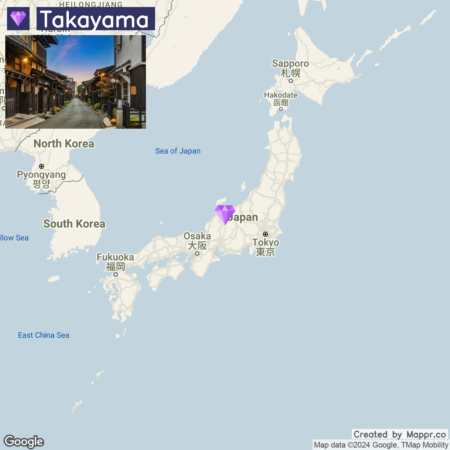
- ✈️ How to Get There: Takayama is accessible by train from Nagoya, with the JR Hida Express offering a scenic route through the heart of Japan’s countryside, directly into the heart of this historic city.
- 🏨 Where to Stay: The Honjin Hiranoya Kachoan offers a luxurious stay in the heart of the old town, providing an authentic Japanese ryokan experience. For a more modern but equally comfortable experience, the Takayama Ouan stands out with its rooftop onsen and views of the Northern Alps.
10. Ine Funaya
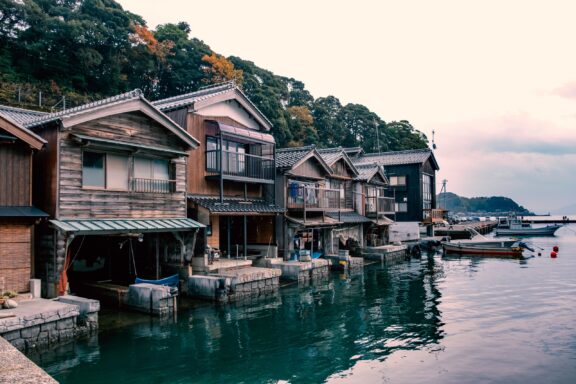
Funaya, unique to the Ine area in Kyoto Prefecture, represents a remarkable aspect of Japan’s coastal culture.
These traditional boat houses, with living quarters above and boat docks below, line the waterfront of Ine Bay, creating a picturesque scene that is both quaint and enchanting.
The harmony of these structures with their natural surroundings exemplifies the Japanese principle of living in balance with nature. Ine’s Funaya offers a rare glimpse into a lifestyle deeply connected to the sea, where the rhythms of the tides dictate the pace of daily life.
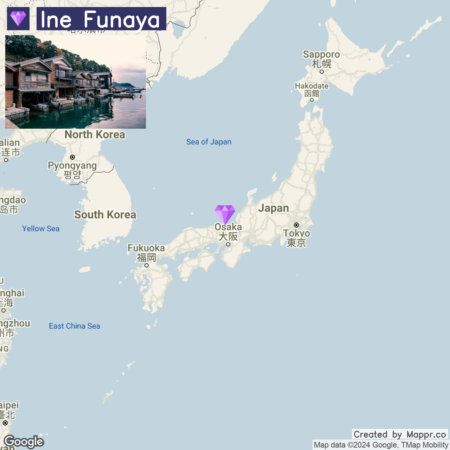
- ✈️ How to Get There: The journey to Ine and its Funaya involves a scenic drive from Kyoto city, best accessed by rental car or bus, winding through the lush landscapes of northern Kyoto Prefecture to the tranquil shores of Ine Bay.
- 🏨 Where to Stay: The Shisui Luxury Hotel provides a luxurious retreat with panoramic bay views and the famed Amanohashidate sandbar.
11. Ouchijuku, Fukushima
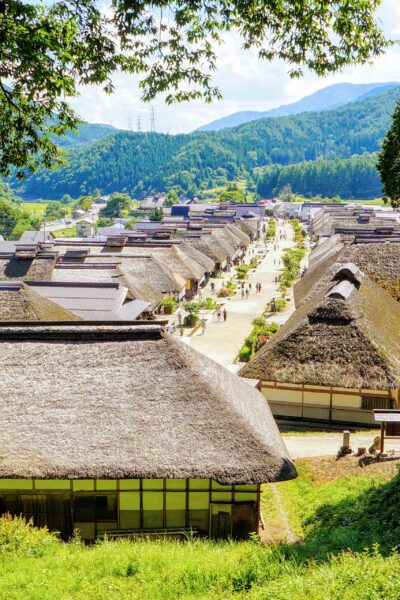
Ouchijuku is a former post town in Fukushima Prefecture, offering a rare glimpse into Japan’s Edo period. This quaint village, with its thatched-roof houses and preserved streets, transports visitors back in time.
Ouchijuku is a place to wander and marvel at historical architecture and a destination to enjoy traditional cuisine, such as negi soba, where diners use a long green onion as chopsticks.
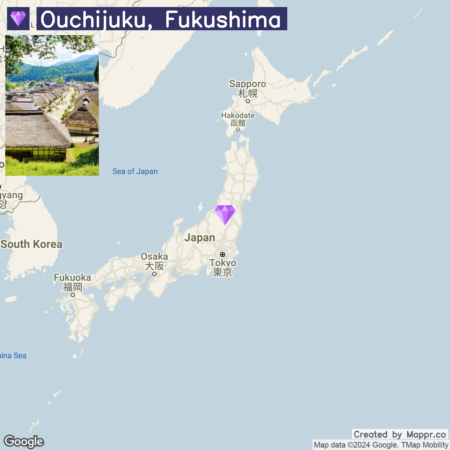
- ✈️ How to Get There: Ouchijuku is accessible by bus from Aizuwakamatsu, making it an easy day trip for those exploring the Aizu region.
- 🏨 Where to Stay: While Ouchijuku offers limited accommodation options, the Tabist Koboshi no Yu Senshintei, just 5 km away, offers an authentic ryokan experience. Meanwhile, Keikokubinoyado Kawane in Aizuwakamatsu provides a charming retreat, blending comfort with the region’s natural beauty.
12. Niigata
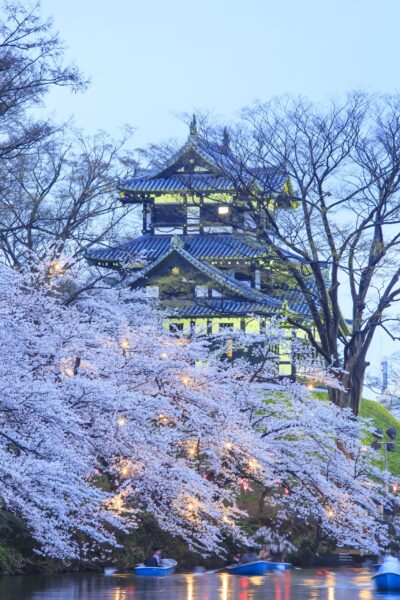
Facing the Sea of Japan, Niigata City is a hub of culture, gastronomy, and natural beauty. Renowned for its high-quality rice and sake, Niigata offers a gastronomic adventure, from its famed rice to fresh seafood.
The city’s waterfront and the Shinano River provide picturesque landscapes, while the Niigata City History Museum and the Northern Culture Museum offer insights into the region’s rich heritage.
Niigata is also a gateway to the ski resorts of Myoko and Sado Island, making it a versatile destination for all seasons.
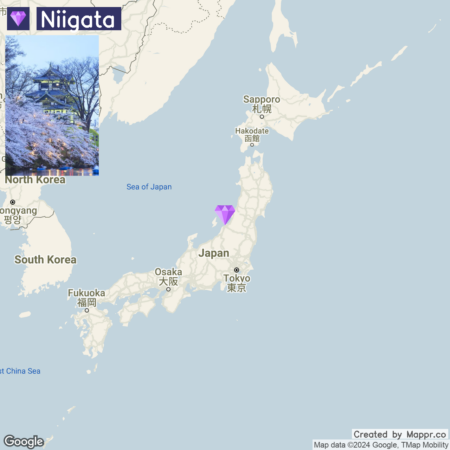
- ✈️ How to Get There: Niigata is directly accessible by Shinkansen from Tokyo, making it an easy escape to Japan’s northern shores.
- 🏨 Where to Stay: The Hotel Nikko Niigata, towering above the city, offers panoramic views of the Sea of Japan, or a blend of traditional relaxation and modern convenience, Tennen Onsen Taho-no-Yu offers a comforting retreat with its natural hot springs and contemporary amenities
13. Izu Peninsula
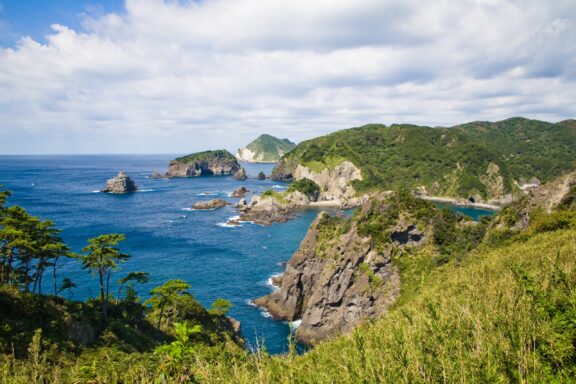
The Izu Peninsula, a stunning coastal area southwest of Tokyo, offers a diverse landscape of rugged coastline, scenic hot springs, and beautiful beaches.
Known for its geological wonders, including the Jogasaki Coast and Mt. Omuro, Izu provides many outdoor activities, from hiking and sea kayaking to indulging in the peninsula’s renowned onsen (hot springs).
The area is also rich in cultural attractions, such as the historic town of Shuzenji and the spectacular cherry blossoms of Kawazu, making it a versatile destination for travelers seeking both adventure and tranquility.
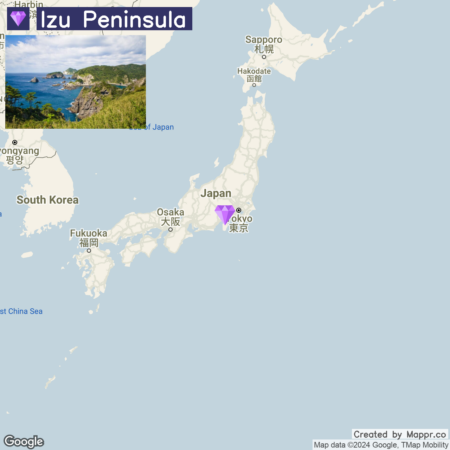
- ✈️ How to Get There: The Izu Peninsula is easily accessible from Tokyo by train, with direct services to various parts of the peninsula, offering a convenient escape into nature’s embrace.
- 🏨 Where to Stay: The Kurofune Hotel, nestled amidst the forested hills with river views, offers a secluded retreat with private onsen baths and contemporary design. Alternatively, the Shimoda Tokyu Hotel, perched on a hilltop, provides panoramic views of Mt. Fuji and Suruga Bay.
14. Kamikochi, Nagano
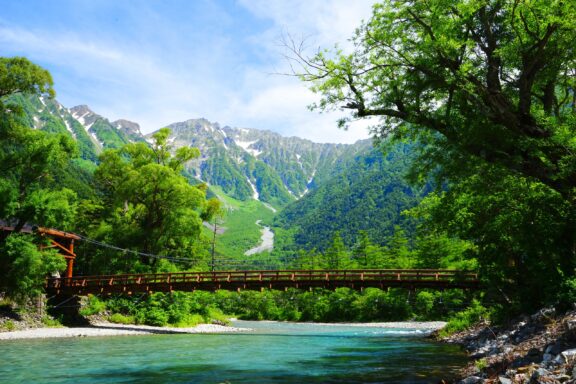
Kamikochi, located in the heart of the Northern Japan Alps, is a pristine mountainous highland valley that offers some of Japan’s most spectacular natural scenery.
Renowned for its clear waters, lush forests, and dramatic mountain vistas, including the iconic Mt. Hotaka, Kamikochi is a haven for hikers, nature enthusiasts, and anyone seeking a serene retreat into nature.
The area is carefully preserved, with access controlled to protect its natural beauty, ensuring an unspoiled wilderness experience.
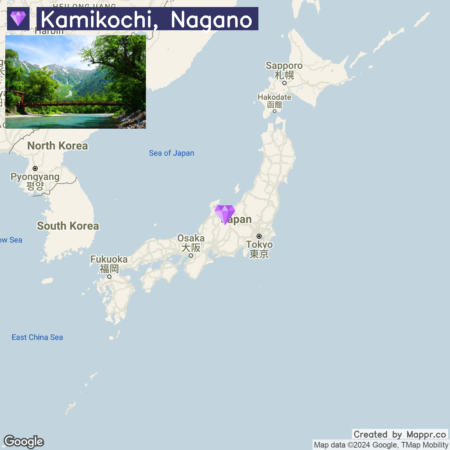
- ✈️ How to Get There: Kamikochi is accessible via bus from Matsumoto, Takayama, or Hirayu Onsen, making it an ideal excursion into the heart of Japan’s alpine region.
- 🏨 Where to Stay: Nestled in the scenic beauty of the highlands, Furusato offers a comforting retreat amidst Takayama’s natural wonders. For a more rustic experience, the Kamikochi Nishi-Itoya Mountain Lodge delivers a cozy atmosphere with traditional tatami rooms and warmth.
15. Togakushi, Nagano
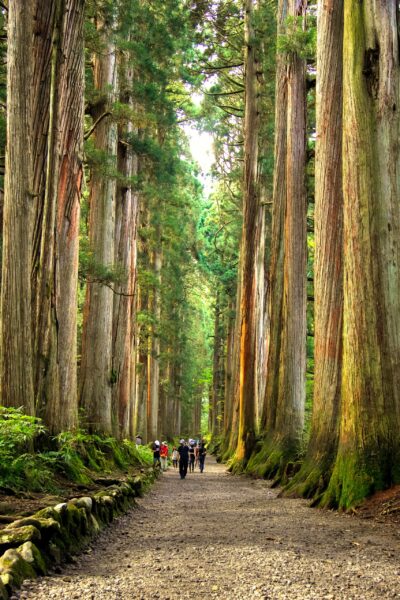
Togakushi is a mystical area in Nagano Prefecture, known for its ancient Shinto shrines set amidst a dense forest, rich with legends and spiritual energy.
The Togakushi Shrine complex, consisting of five shrines, offers a spiritual journey through beautiful forested paths leading to the impressive Okusha Shrine at the mountain’s base.
Togakushi is also famous for its soba noodles, a local specialty, making it a culinary destination for those seeking to combine gastronomic delights with cultural exploration.
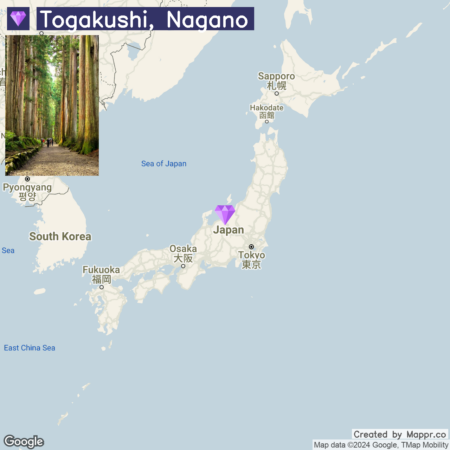
- ✈️ How to Get There: Togakushi is best reached by bus from Nagano Station, offering a scenic route into the heart of this sacred landscape.
- 🏨 Where to Stay: Yadoya Shiroganeya offers a welcoming retreat that marries traditional charm with modern comforts. For a deeper dive into the region’s cultural heritage, Oshi Ryokan presents a cozy, authentic experience with its traditional hospitality and home-cooked Japanese meals.
16. Matsuyama, Ehime
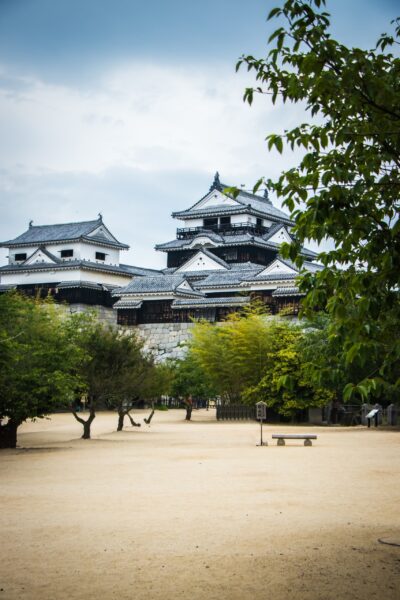
Matsuyama, the largest city on Shikoku Island, is famed for its historic Dogo Onsen, one of Japan’s oldest hot springs, and Matsuyama Castle, which offers panoramic views of the city and the Seto Inland Sea.
The city’s literary heritage, associated with the classic Japanese novel “Botchan” by Natsume Soseki, adds a cultural depth to the visit.
Matsuyama’s blend of historical sites, cultural landmarks, and modern amenities makes it a compelling destination for diverse travelers.
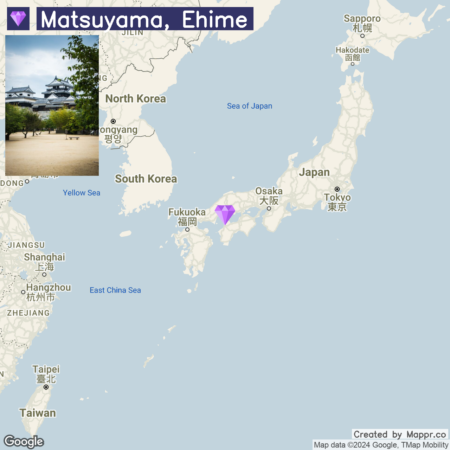
- ✈️ How to Get There: Matsuyama is accessible by air from Tokyo and Osaka or by ferry from Hiroshima, making it an easily reachable destination within the Seto Inland Sea region.
- 🏨 Where to Stay: Ensuring guests enjoy modern amenities and comfort, Comfort Hotel Matsuyama offers a convenient stay near the historic Dogo Onsen. For a more contemporary stay, the Matsuyama Tokyu REI Hotel offers modern comfort in the city center, suitable for exploring Matsuyama’s attractions.
17. Kurashiki, Okayama
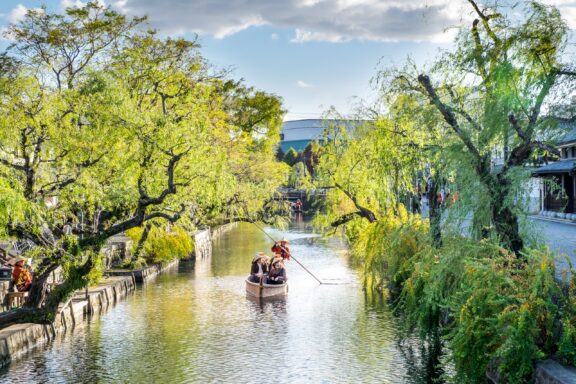
Kurashiki is a charming historic city known for its beautifully preserved canal area, the Bikan Historical Quarter, where visitors can wander among traditional storehouses and merchant homes, now transformed into museums, shops, and cafés.
The city’s cultural highlight is the Ohara Museum of Art, which houses an impressive collection of Western art. Kurashiki offers a unique blend of Japanese history and Western art in a picturesque setting, making it a fascinating stop for art lovers and history enthusiasts.
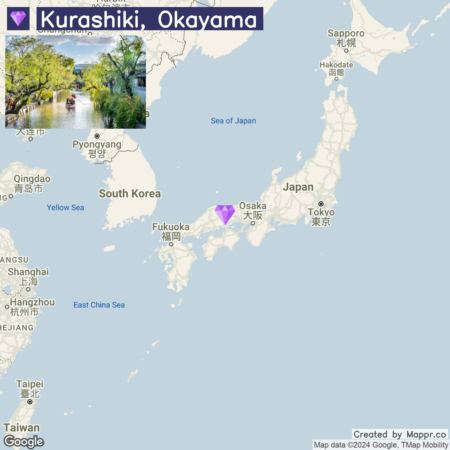
- ✈️ How to Get There: Kurashiki is easily accessible by train from Okayama, making it a convenient day trip or a pleasant stopover on a journey through the Chugoku region.
- 🏨 Where to Stay: The Kurashiki Ivy Square Hotel, housed in a converted cotton mill, offers a unique accommodation experience. For a luxurious experience, Achi’s Shokurano Inn provides an elegant retreat with refined Japanese aesthetics and hospitality.
18. Otaru, Hokkaido
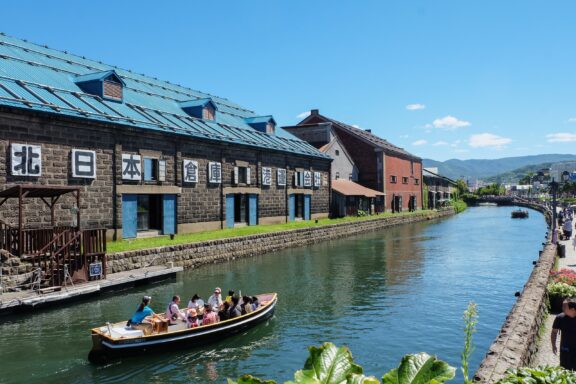
Otaru, a quaint port city on Hokkaido’s western coast, is renowned for its well-preserved canal area and historic buildings, telling tales of its bustling herring trade past.
The Otaru Canal, with its romantic gas lamps and stone warehouses, now converted into boutiques and cafes, creates a nostalgic atmosphere, especially in the evening. T
The city is also celebrated for its glassware and music boxes, with numerous shops and museums dedicated to these crafts. Otaru’s blend of historical charm, natural beauty, and artisanal heritage makes it an enchanting destination.
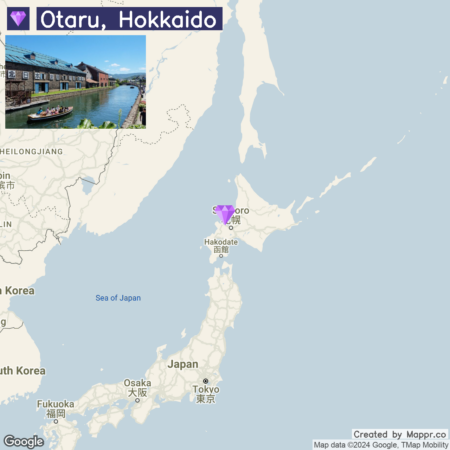
- ✈️ How to Get There: Otaru is easily reached by train from Sapporo, making it a popular day trip or a relaxing stop in a broader Hokkaido itinerary.
- 🏨 Where to Stay: The Hotel Nord Otaru, located along the scenic canal, offers comfortable accommodations with picturesque views. Alternatively, the Authent Hotel Otaru blends Western comfort and Japanese elegance.
19. Naoshima Island
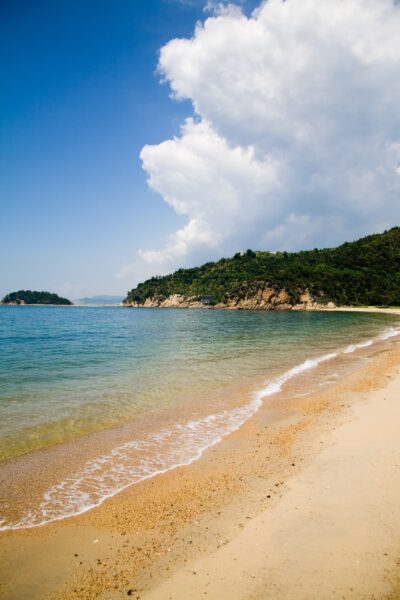
Naoshima, often called Japan’s “Art Island,” is a unique blend of contemporary art, architecture, and natural beauty in the Seto Inland Sea.
The island is home to various art installations, museums, and architectural projects, including the renowned Benesse House, the Chichu Art Museum, and the Art House Project in the traditional village of Honmura.
Naoshima’s commitment to integrating art with nature creates an immersive cultural experience, making it a pilgrimage site for art enthusiasts and those seeking a distinctive and thought-provoking escape.
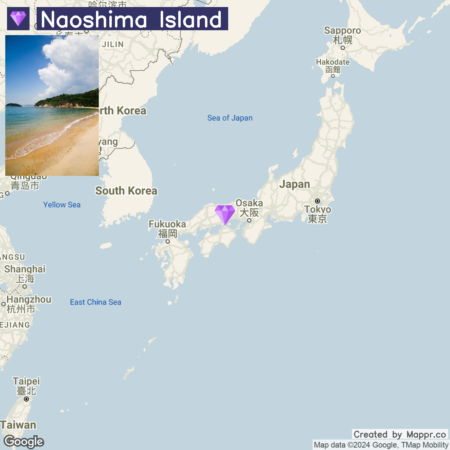
- ✈️ How to Get There: Naoshima is accessible by ferry from Uno Port or Takamatsu, offering a scenic approach to this artistic haven.
- 🏨 Where to Stay: MY LODGE Naoshima provides visitors a cozy and artistic retreat, blending seamlessly into the island’s creative landscape with thoughtfully designed spaces. The Tsutsuji-so Lodge provides cozy bungalows and traditional Japanese rooms for a more conventional stay.
20. Yakushima Island
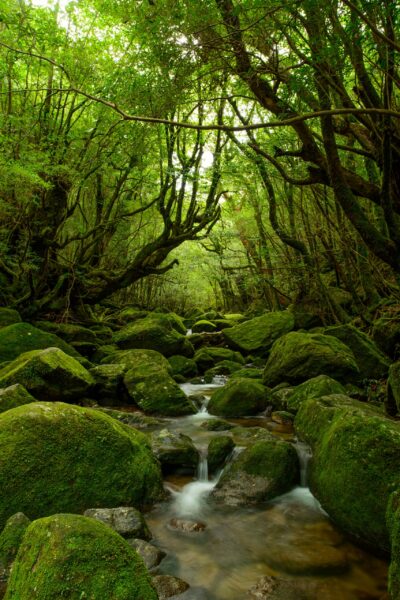
Yakushima, a UNESCO World Heritage site, is an island off the southern coast of Kyushu. It is celebrated for its ancient cedar forests, some thousands of years old, including the iconic Jomon Sugi.
The island’s lush landscapes, waterfalls, and diverse ecosystems make it a paradise for hikers and nature enthusiasts. Yakushima’s profound natural beauty and the spiritual presence of its ancient forests offer a deep connection with nature.
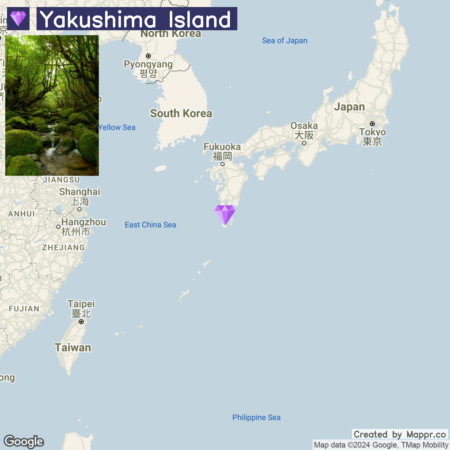
- ✈️ How to Get There: Yakushima is reachable by ferry from Kagoshima or air from Kagoshima and Osaka, offering a gateway to this enchanting island.
- 🏨 Where to Stay: The Sankara Hotel & Spa Yakushima offers a luxurious retreat, blending French elegance with Japanese hospitality. For a closer nature experience, the Yakushima Cottage Morino Fairy provides charming cottages equipped with modern comforts.
21. Geibikei Gorge, Iwate
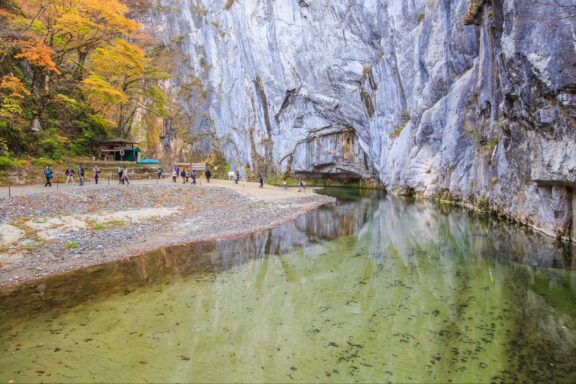
Geibikei Gorge, located in the scenic town of Hiraizumi, is a natural wonder characterized by its towering limestone cliffs and serene river.
A traditional flat-bottomed boat ride down the Satetsu River, guided by boatmen who navigate and serenade passengers, offers a unique way to experience the gorge’s tranquil beauty and seasonal splendor.
The changing leaves in autumn and the lush greenery in summer provide a breathtaking backdrop, making Geibikei Gorge a must-visit for nature lovers and those seeking peace and rejuvenation.
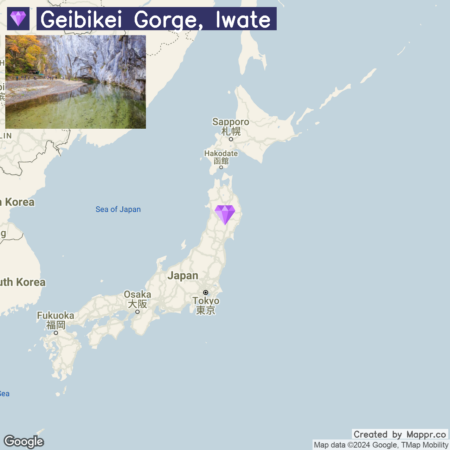
- ✈️ How to Get There: Geibikei Gorge is accessible by train and bus from Ichinoseki Station, offering a journey into the heart of Iwate’s natural landscapes.
- 🏨 Where to Stay: Café & Guest House Kaziya offers a unique and welcoming stay for those exploring the Geibikei Gorge and its surroundings. This cozy guesthouse combines the comfort of modern accommodations with the charm of a local café, providing a warm, friendly atmosphere.
22. Zao Fox Village
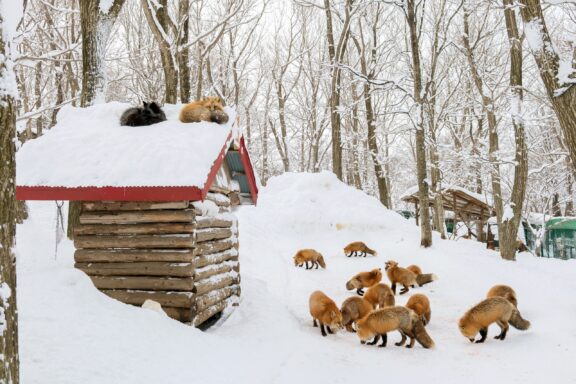
Located in the mountains near Shiroishi, Zao Fox Village is a unique sanctuary where visitors can interact with over a hundred free-roaming foxes.
This one-of-a-kind attraction provides a rare opportunity to observe and feed various foxes in a semi-wild setting. The village also houses other animals, but the foxes are undoubtedly the main attraction, offering a unique glimpse into the lives of these fascinating creatures.
It’s a must-visit for animal lovers and those interested in experiencing a different side of Japan’s diverse attractions.
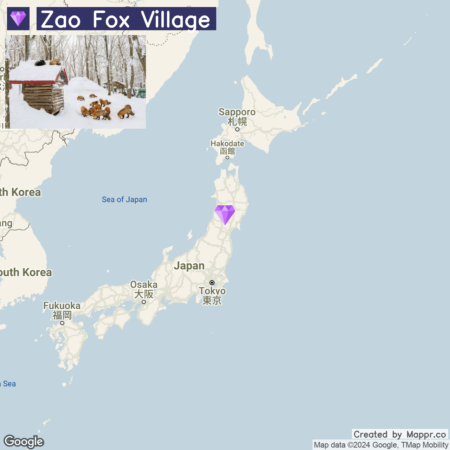
- ✈️ How to Get There: Zao Fox Village is accessible by train from Sendai to Shiroishi Station, followed by a short taxi ride to the village, nestled in the scenic Zao Mountains.
- 🏨 Where to Stay: For visitors looking to stay nearby, the Chikusenso Mt.Zao Onsen Resort & Spa offers luxurious accommodations with hot spring baths. Alternatively, the Taoya Akiu provides a comfortable stay with amenities suitable for families and solo travelers.
23. Shirogane Blue Pond
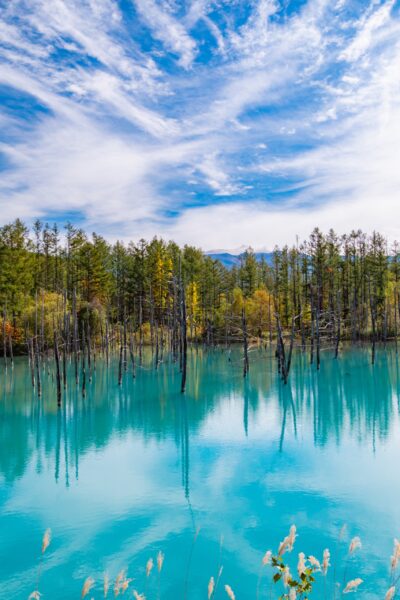
The Shirogane Blue Pond, located near the town of Biei in Hokkaido, Japan, is a mesmerizing natural wonder known for its ethereal blue water, which contrasts strikingly with the surrounding forest and the white birch trees that stand submerged in the pond.
This captivating sight results from natural minerals dissolved in the water, reflecting light so that the pond appears a bright, almost surreal shade of blue.
The changing seasons offer varied views, from the lush greenery of summer to the snowy wonderland of winter, making it a year-round attraction.
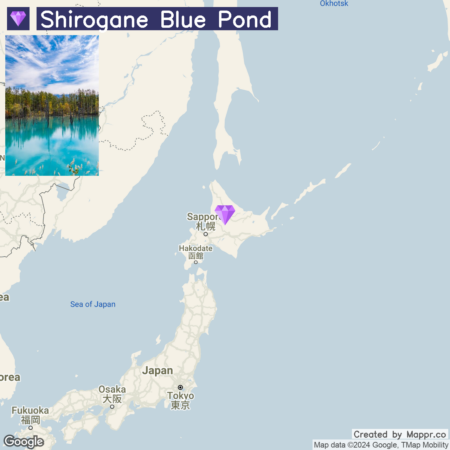
- ✈️ How to Get There: The Shirogane Blue Pond is most easily reached by car from Asahikawa, the nearest major city in Hokkaido, with an airport and train station. Public buses also run from Asahikawa and Biei, making the pond accessible for those relying on public transportation.
- 🏨 Where to Stay: The Vantean House Hotel offers a cozy and comfortable home away from home, providing a peaceful retreat after exploring. For a more intimate stay, N-vacation STAY presents a charming and modern accommodation option, perfect for couples or solo travelers looking to relax in a serene setting
24. Monet Pond
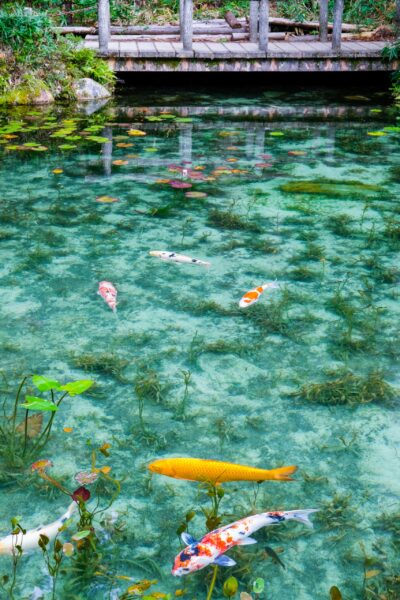
Monet’s Pond is a small but enchantingly beautiful pond in Gifu Prefecture. Its nickname comes from its resemblance to Claude Monet’s impressionist paintings.
The clear, vibrant waters, teeming with colorful koi fish and framed by lush greenery and floating flowers, create a picturesque scene straight out of a painting.
This serene spot is perfect for those seeking tranquility and a feast for the eyes, especially during the spring and summer months when the flowers bloom.
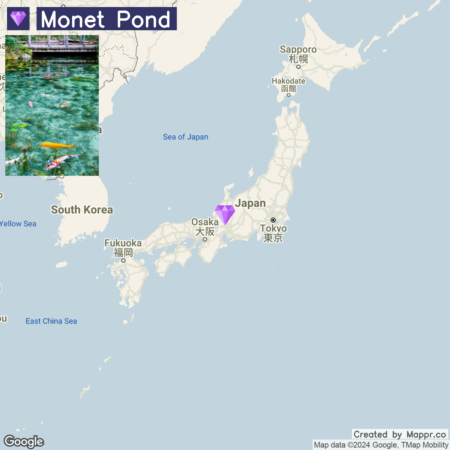
- ✈️ How to Get There: Monet’s Pond can be accessed by car or bus from nearby cities in Gifu Prefecture, offering a peaceful detour into the countryside.
- 🏨 Where to Stay: The Hotel Park Gifu provides comfortable accommodations with convenient access to the region’s attractions, including Monet’s Pond. For a more traditional experience, the Ryokan Yunoshimakan in Gero offers hot spring baths and traditional Japanese hospitality.
25. Kurokawa Onsen
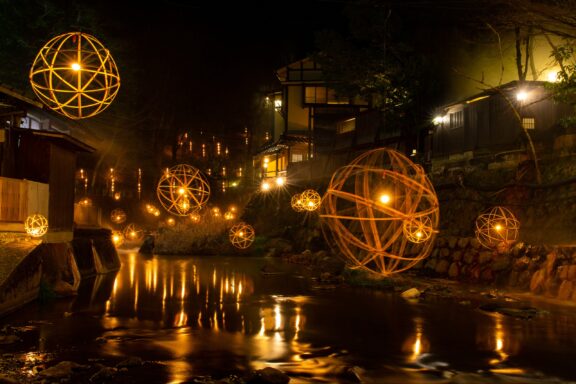
Kurokawa Onsen is a picturesque hot spring town in the heart of Kyushu, known for its traditional ryokan (Japanese inns), outdoor baths, and charming village atmosphere.
Nestled along a river and surrounded by nature, Kurokawa offers a tranquil retreat with therapeutic hot springs in rustic, scenic surroundings.
The town’s commitment to preserving its traditional character and serene environment makes it an ideal destination for those seeking relaxation and a taste of Japan’s onsen culture.
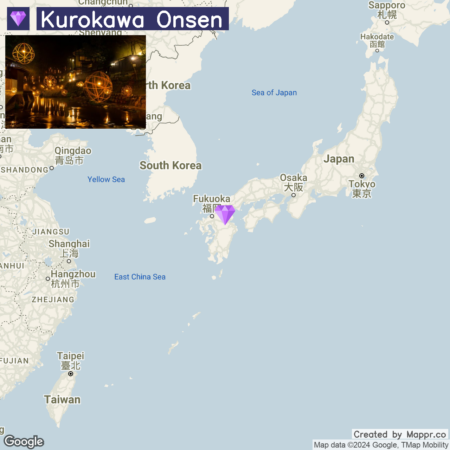
- ✈️ How to Get There: Kurokawa Onsen is best reached by bus from Kumamoto or Fukuoka, winding through the scenic countryside to this secluded hot spring haven.
- 🏨 Where to Stay: Yumerindo Kumamoto Hotel invites guests to enjoy a blend of modern luxury and traditional Japanese aesthetics. Meanwhile, Galaxy Inn Kinoko offers a cozy and intimate setting, with beautifully crafted accommodations that provide a serene base for exploring the area’s natural beauty.
26. Yonaguni Island
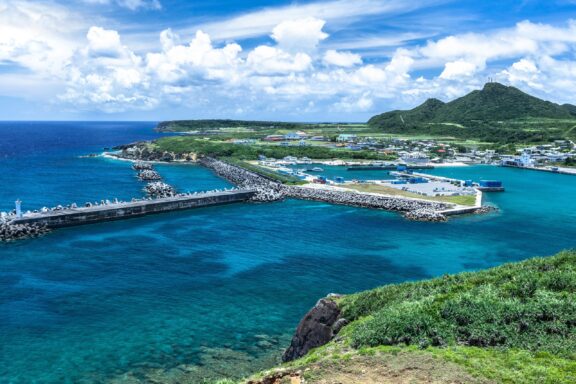
Yonaguni Island, Japan’s westernmost inhabited island, is part of the Yaeyama Islands in Okinawa Prefecture.
Known for its dramatic cliffs, deep blue waters, and the mysterious Yonaguni Monument, an underwater structure some believe to be man-made, the island offers a unique blend of natural beauty and mystery.
Diving enthusiasts flock to Yonaguni for its exceptional dive sites, including the chance to swim with schools of hammerhead sharks in the winter months.
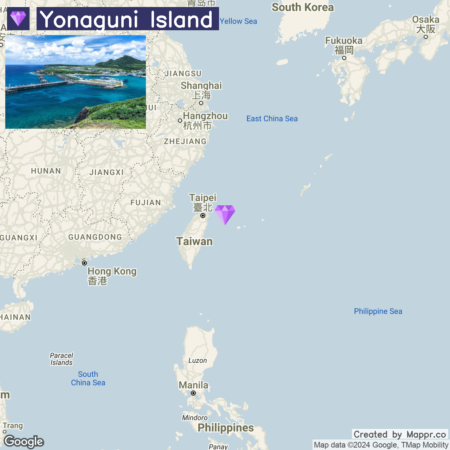
- ✈️ How to Get There: Yonaguni Island is accessible by air from Naha, Okinawa, or Ishigaki Island, making it a remote but rewarding destination for adventurers.
- 🏨 Where to Stay: The Hotel Route-inn Yamaguchi Yuda Onsen offers a simple, comfortable stay with easy access to diving shops and the island’s natural attractions. For a more immersive experience, the Resort Hotel Mihagi provides ocean-view rooms and facilities designed for divers.
27. Sado Island
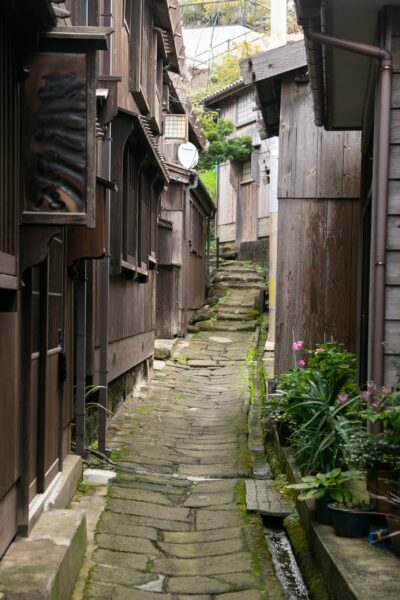
In the Sea of Japan, Sado Island is rich in history, natural beauty, and cultural heritage, including its famous tarai-bune (tub boats) and the legacy of exiles, such as the Noh dramatist Zeami.
The island’s varied landscapes offer diverse outdoor activities, from rugged coastlines to lush terraced rice fields. Sado is also known for its thriving arts scene, particularly the Kodo Taiko drumming group and the annual Earth Celebration festival.
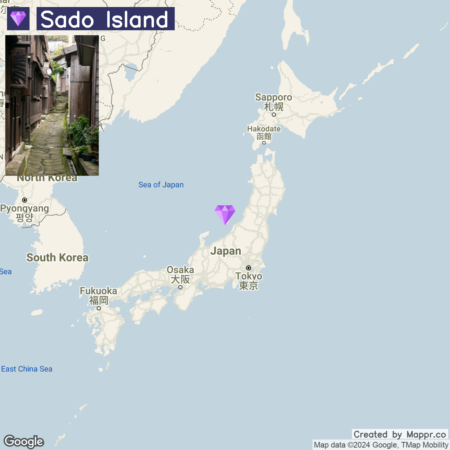
- How to Get There: Sado Island is accessible by ferry from Niigata City, a journey that adds to its remote charm.
- 🏨 Where to Stay: The Sado National Park Hotel Oosado offers spacious rooms with breathtaking views of the Sea of Japan and the rugged cliffs of Sado.
28. Shimane
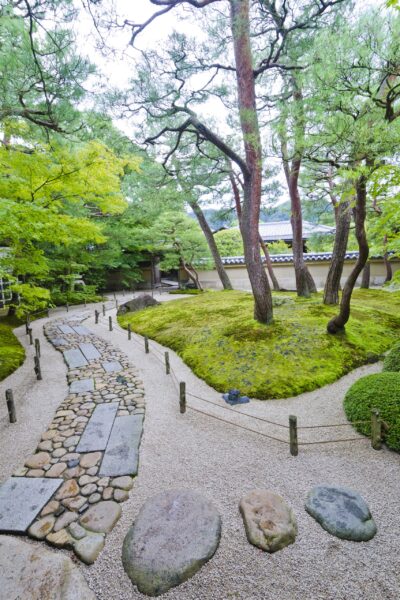
Shimane, located in the Chugoku region of Honshu, is a treasure trove of myth, history, and natural beauty.
Known as the land of the gods, Shimane is home to Izumo Taisha, one of Japan’s most important Shinto shrines, and the ancient Adachi Museum of Art with its stunning Japanese garden.
The prefecture offers a deep dive into Japan’s spiritual and cultural heritage, set against a backdrop of dramatic landscapes, from the rugged San’in Kaigan coast to the tranquil shores of Lake Shinji.
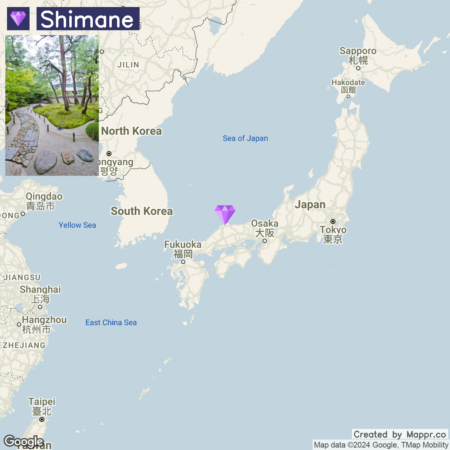
- ✈️ How to Get There: Shimane Prefecture is accessible by air, train, and bus from major cities in Japan, offering a journey into a region steeped in legend and tradition.
- 🏨 Where to Stay: The Tamatsukuri Onsen Kasuien Minami in Matsue offers a luxurious hot spring experience with exquisite gardens and refined cuisine. For a more historical stay, the Onyado Nono Matsue Natural Hot Spring provides modern comforts in the heart of Matsue.
29. Shodoshima Island
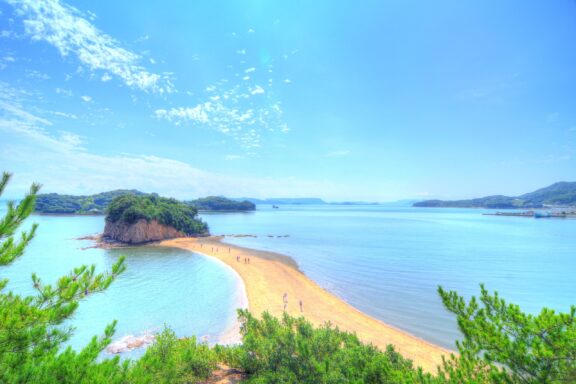
Shodoshima, the second-largest island in the Seto Inland Sea, is known for its Mediterranean-like climate, olive groves, and soy sauce production.
The island offers a unique combination of natural beauty, scenic coastlines, the dramatic Kankakei Gorge, and cultural experiences, such as traditional soy sauce factories and olive parks.
Shodoshima also serves as a venue for the Setouchi Triennale art festival, featuring installations and artworks harmonizing with the island’s landscapes.
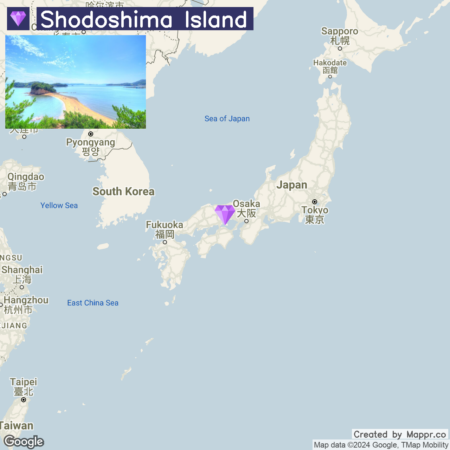
- ✈️ How to Get There: Shodoshima is accessible by ferry from Takamatsu in Shikoku or Okayama on Honshu, making it an appealing destination for island hopping in the Seto Inland Sea.
- 🏨 Where to Stay: The Bay Resort Hotel Shodoshima offers comfortable accommodations with stunning sea views, outdoor pools, and spa facilities. For a more traditional experience, the Shodoshima International Hotel provides a warm welcome with its hot spring baths and local cuisine.
30. Yakage Town, Okayama
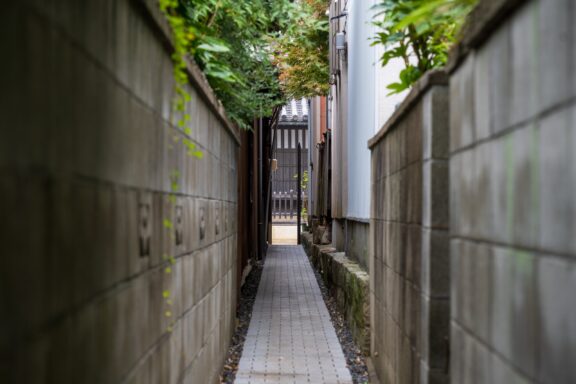
Yakage Town, located in Okayama Prefecture, is a hidden gem that offers a glimpse into the Edo period with its well-preserved samurai and merchant quarters.
Once a prosperous post town along the historical Sanyo Road, this small town invites visitors to step back in time and explore its historic buildings, traditional tea houses, and the annual Yakage Daimyo Procession, which reenacts a feudal lord’s journey.
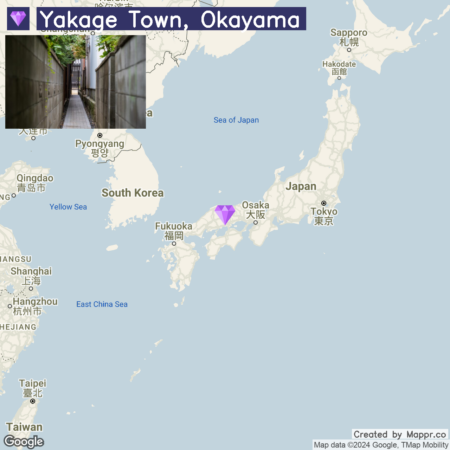
- ✈️ How to Get There: Yakage Town is best reached by car or bus from Okayama, providing a scenic drive through the rural landscapes of Chugoku.
- 🏨 Where to Stay: The Stone – Vacation STAY 14007, located in approximately 15 kilometers from Yakage, provides a convenient base for exploring Yakage and other regional attractions.
31. Nokogiriyama, Chiba
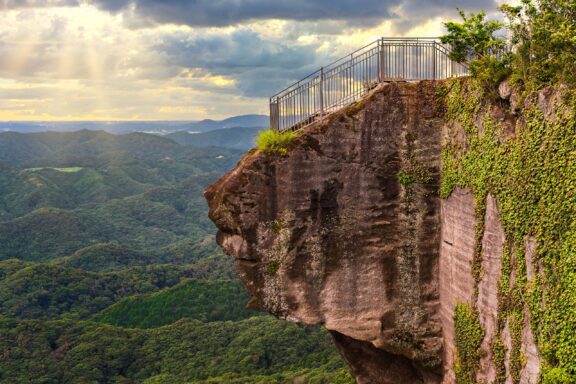
Nokogiriyama, or “Sawtooth Mountain,” in Chiba Prefecture is a lesser-known destination that offers breathtaking views and a unique cultural experience.
This mountain is home to the sprawling Nihon-ji temple complex, featuring a giant stone Buddha carved into its hillside, one of the largest in Japan, and the “Hell Peek” viewpoint, where visitors can stand over a sheer cliff for thrilling vistas.
The mountain’s name derives from its jagged ridgeline, which resembles a saw blade. Hiking trails lead visitors through beautiful natural scenery and past hundreds of arhat statues representing the disciples of Buddha.
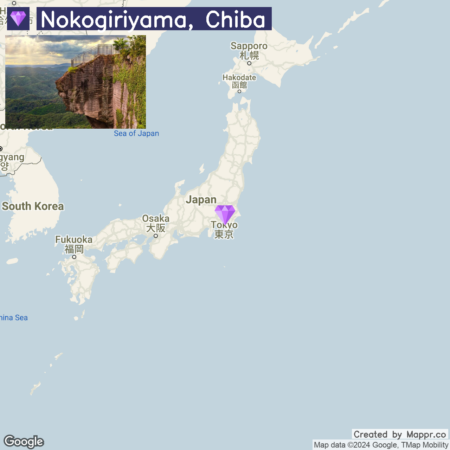
- ✈️ How to Get There: Nokogiriyama is accessible by train from Tokyo to Hamakanaya Station, followed by a short cable car ride or hike up the mountain.
- 🏨 Where to Stay: For those wishing to extend their visit, Amane in Kyonan, Chiba offers luxurious accommodations and extensive onsen facilities, providing relaxation after a day of hiking.
32. Hachimantai
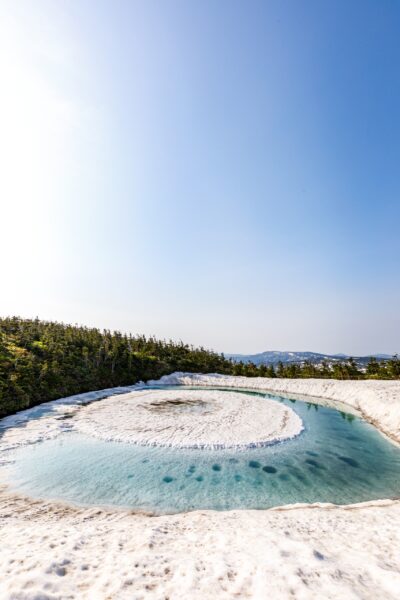
Hachimantai, located in the northern Tohoku region of Japan, is a stunning area known for its pristine natural landscapes, including vast marshlands, volcanic hot springs, and the scenic Towada-Hachimantai National Park.
This hidden gem offers outdoor enthusiasts various activities across the seasons, from vibrant autumn foliage and serene hiking trails in the warmer months to exceptional skiing and snowboarding in winter.
The region’s geothermal activity also supports numerous onsen resorts, providing a perfect blend of adventure and relaxation.
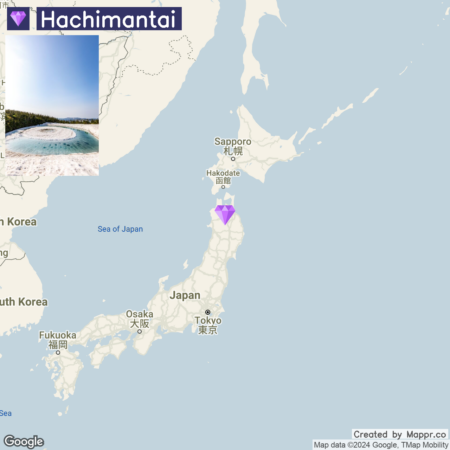
- ✈️ How to Get There: Hachimantai is best reached by car or bus from Morioka, the capital city of Iwate Prefecture. The journey from Morioka to Hachimantai provides a scenic drive through the mountains of northern Japan.
- 🏨 Where to Stay: The ANA Intercontinental Appi Kogen Resort, situated at the base of the Appi Ski Resort, offers luxurious accommodations. For a more traditional experience, the Apikogen Mori no Hotel features natural hot springs baths and traditional Japanese rooms, providing a peaceful nature retreat.
33. Teshima Island
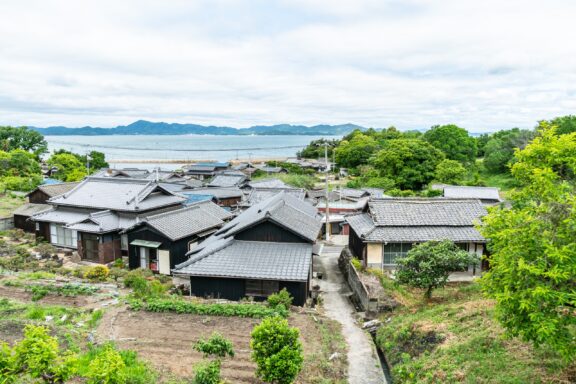
Teshima Island, another jewel in the Seto Inland Sea, is renowned for its art installations, including the Teshima Art Museum, which blends architecture, art, and nature in a seamless and captivating way.
The island’s terraced rice fields, tranquil villages, and beautiful beaches add to its allure, making it a peaceful escape for art lovers and those seeking a connection with the Japanese countryside.
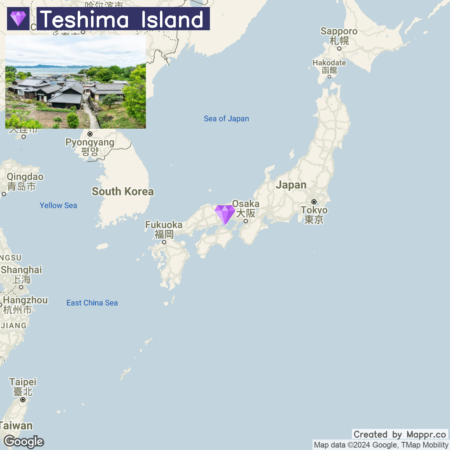
- ✈️ How to Get There: Teshima is reachable by ferry from Takamatsu or Naoshima, allowing for an easy integration into a broader itinerary exploring the art islands of the Seto Inland Sea.
- 🏨 Where to Stay: Shiraishi Island International Villa provides modern, minimalist lodgings that reflect the island’s artistic and natural beauty.
Final Thoughts
Japan’s hidden gems offer a treasure trove of experiences far beyond the well-trodden paths of Tokyo and Kyoto.
From the ancient cedar forests of Yakushima to the tropical beaches of Okinawa, and from the cultural richness of Takayama to the art-filled islands of the Seto Inland Sea, each destination presents a unique facet of Japan’s diverse landscape and heritage.
Image Sources and Copyright Information
- Twilight at Shuri Castle in Okinawa: © Sean Pavone/Shutterstock
- Pagoda and Waterfall in Lush Green Setting: © Piyawannee/Shutterstock
- Cherry Blossom Alley: © Spyan/Shutterstock
- Sakura Blossoms at Sunrise in Matsushima, Japan: © Hiroyoshi Kushino/Shutterstock
- Torii Gate at Lake Ashi with Mount Fuji in the Background, Hakone, Japan: © Krishna.Wu/Shutterstock
- Torii Gate at Lake Biwa during Sunset: © TAKUYA.A/Shutterstock
- Traditional Japanese Street in Ginzan Onsen with Wooden Buildings and Stream: © lydiarei/Shutterstock
- Japanese Castle Amidst Autumn Foliage: © LightRecords/Shutterstock
- Dusk in Takayama Old Town, Japan: © Noppasin Wongchum/Shutterstock
- Traditional Japanese Funaya Houses by the Water: © Nithid Memanee/Shutterstock
- Traditional Thatched Roof Village in Japan: © Wizard8492/Shutterstock
- Takada Castle with Cherry Blossoms in Niigata: © Norikazu/Shutterstock
- Izu Peninsula Coastline: © tororo reaction/Shutterstock
- Kappa Bridge in Kamikochi, Japan with Mountain Backdrop: © Amstk/Shutterstock
- Pathway Through Tall Cedar Trees: © janken/Shutterstock
- Matsuyama Castle in Ehime Prefecture, Japan: © fumoto_s/Shutterstock
- Boat Ride Along the Kurashiki Canal in Japan: © siriwat sriphojaroen/Shutterstock
- Canal and Historic Warehouses in Otaru, Hokkaido: © Yaoinlove/Shutterstock
- Secluded Beach on Naoshima Island: © tororo reaction/Shutterstock
- Moss-Covered Stones in a Forest Stream: © since1827/Shutterstock
- Tourists at Geibikei Gorge in Autumn: © Piith Hant/Shutterstock
- Foxes in Snow at Zao Fox Village: © wolfmaster13/Shutterstock
- Serene Blue Lake with Submerged Trees and Forest Background: © okimo/Shutterstock
- Koi Fish in a Pond with Wooden Bridge: © kazu8/Shutterstock
- Illuminated Spheres at Night in Kurokawa Onsen: © TOYOKAZU.Y/Shutterstock
- Coastal View of Yonaguni Island Port: © w.aoki/Shutterstock
- Narrow Alley Between Traditional Edo-Era Wooden Houses: © Lecker Studio/Shutterstock
- Japanese Garden Pathway: © Tanya Jones/Shutterstock
- Sandy Path Between Seas: © mutsu7211/Shutterstock
- Narrow Alleyway in Traditional Town: © JinFujiwara/Shutterstock
- Observation Deck on Mountain Cliff Overlooking Forested Valley: © kuremo/Shutterstock
- Dragon Eye Lake in Hachimantai: © type100/Shutterstock
- Rural Japanese Village Landscape: © Chatchawat Prasertsom/Shutterstock
